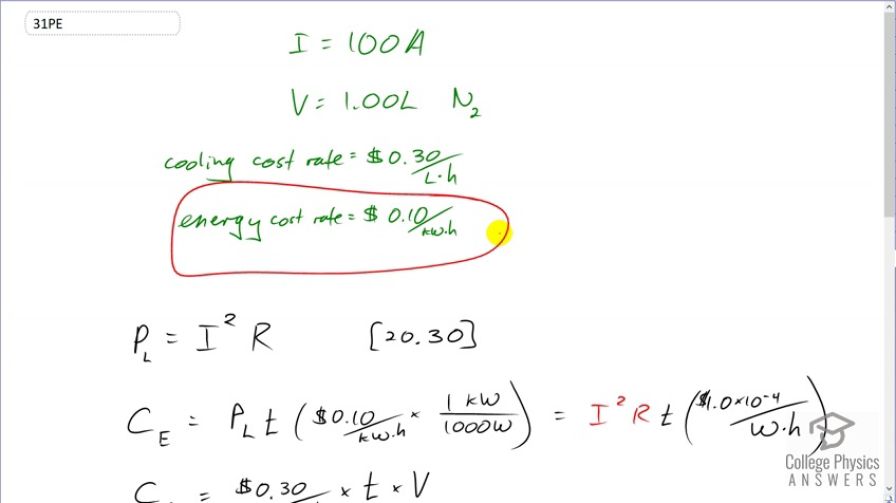Question
A section of superconducting wire carries a current of 100 A and requires 1.00 L of liquid nitrogen per hour to keep it below its critical temperature. For it to be economically advantageous to use a superconducting wire, the cost of cooling the wire must be less than the cost of energy lost to heat in the wire. Assume that the cost of liquid nitrogen is 0.10 per kW·h. What is the resistance of a normal wire that costs as much in wasted electric energy as the cost of liquid nitrogen for the superconductor?
Final Answer
Solution video
OpenStax College Physics for AP® Courses, Chapter 34, Problem 31 (Problems & Exercises)

vote with a rating of
votes with an average rating of
.
Calculator Screenshots
Video Transcript
This is College Physics Answers with Shaun Dychko. We want to find the resistance of a piece of wire such that the cost of the energy lost due to heat in this regular wire equals the cooling cost needed to cool a superconducting wire that loses no heat. So there is 1 liter of liquid nitrogen used to cool the superconducting wire and the cooling cost is 30 cents per liter of coolant per hour and the wire is meant to carry 100 amps. And so the power lost in a regular wire is the current through it times its resistance or I should say the current squared times its resistance— that's equation 30 in chapter 20— and the cost of the energy lost in this regular wire is gonna be the power loss multiplied by time multiplied by this energy cost rate which we have to express in cost per watt hours because this power has units of watts and so we need our cost in dollars per watt hour. And this power loss we'll express as I squared R since we know what the current is. And then the cost of the coolant is 30 cents per liter per hour multiplied by time multiplied by the volume of coolant and we are told that the costs are meant to be equal; this is a break even point for the different costs. So we can equate this I squared times resistance times time times the energy-cost rate equate that to the coolant cost rate times time times volume and the times will cancel and we'll divide both sides by the current squared and divide by this energy cost rate And so we have 30 cents per liter per hour times the volume divided by 1 times 10 to the minus 4 dollars per watt hour times the current squared. And we substitute 1 liter in for the volume and 100 amps in for the current and we end up with a resistance of 0.30 Ω's for the regular wire.
